Let's figure out what to do if tomatoes burn in a greenhouse - how to save your harvest
A greenhouse helps to get an early harvest of many vegetables, including tomatoes. But even in a special room with all the conditions, the gardener is not immune from crop loss due to heat. Growing vegetables in the southern regions is fraught with the danger of overheating, burns and plant death.
How to protect tomato seedlings in a greenhouse from the heat, what actions to take if the bushes become lethargic and burns appear on the leaves - you will learn from our article, supplemented with photographic materials.
What to do if the tomatoes in the greenhouse are burnt
Tomatoes are perhaps our most popular crop, both outdoors and indoors. Those who do not have a plot grow them on balconies and window sills.
In greenhouses and greenhouses, film, polycarbonate or glass are used to provide good lighting for seedlings. However, having a well-equipped room does not guarantee a rich harvest. In closed structures, plants often suffer from overheating and heat.
How to save seedlings
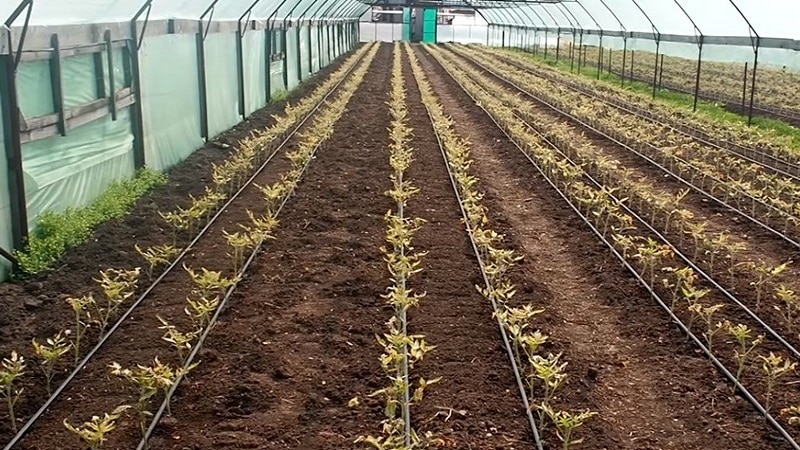
To save the plant, damage is assessed. If only the leaves of the seedlings are damaged, all is not lost. But if there are burns on the stems and roots, the best solution would be to replace the bush.
Signs of burning tomatoes:
- lethargy of the bush;
- leaf blades lose color;
- burns on leaves;
- fall off flowers and ovaries;
- plant growth stops;
- stems and roots dry out.
First of all, damaged leaves are removed. If there are many of them, the procedure is carried out in several stages.It should be noted that after trimming the green mass, the harvest time is delayed by several days or even weeks.
Why do tomatoes burn?
Not all summer residents have the opportunity to constantly be on the site. But leaving plants unattended in the heat or forgetting to water the beds in a timely manner is dangerous. An increase in temperature to +30°C makes tomato flowers sterile. If this temperature lasts for more than four hours, the first signs of overheating of the plants appear.
With prolonged overheating, burns appear on the leaves, and they start to curl. Fruits also suffer from the heat - cracks and light spots form on them. The taste deteriorates and the flesh becomes coarsely fibrous.
At a temperature of +38...+42°C, the leaves fall off, the stem dries out and the plant dies. Seedlings affected by overheating spend energy on restoration, so their development stops.
Important! Experienced gardeners know that dry white spots occur not only from overheating and sunburn. Can also burn seedlings feeding from fresh manure.
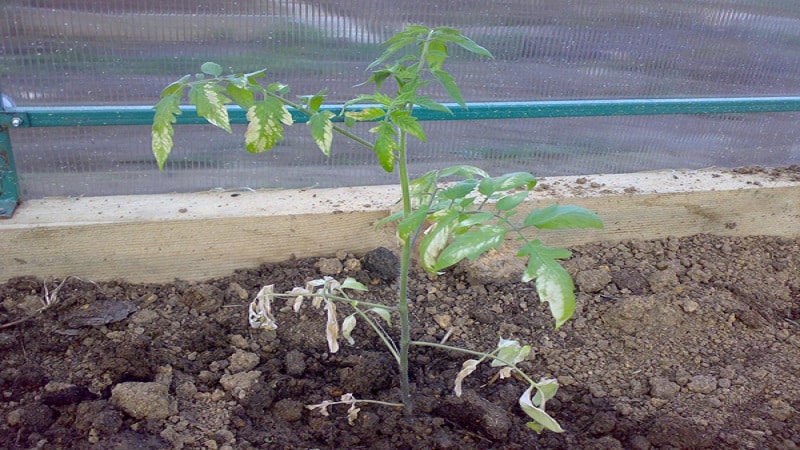
How to prevent tomatoes from burning in a greenhouse
To protect the tomatoes, in hot weather the greenhouse is provided with cross-ventilation. Simultaneously opening doors and windows not only reduces the temperature, but also protects seedlings from late blight.
Tomato seedlings can be made weather-resistant. To do this, young sprouts are hardened off - they are taken outside for a short time or, more often, windows are opened in greenhouses. Hardening begins as soon as the air temperature rises to +18°C.
Why do tomatoes wither in a greenhouse?
There are several reasons why tomatoes do not tolerate heat well:
- Unpreparedness of seedlings for changing environmental conditions.The sprouts were planted in the ground without prior hardening.
- Seedlings were grown at home on northern windows.
- During the hot period, the greenhouse was not ventilated enough.
- The vegetable grower did not control the temperature in the room.
- Long absence of the owner from the site.
How to save tomatoes in the heat
You can save wilted tomato bushes. It is important to establish a temperature regime favorable for seedlings. Indicators should not exceed +23...+25°C during the day, and +18°C at night.
The drug "Epin" - a growth stimulator - will help revive the bushes. With it, a damaged plant will quickly grow green mass and increase stress resistance. For treatment, use one ampoule per 5 liters of water. The ground part of the seedlings is treated with a spray bottle. As a preventive measure, treatment with Epin is carried out once every two weeks.
Important! To protect the plant from additional burns, it is sprayed in the morning or evening.
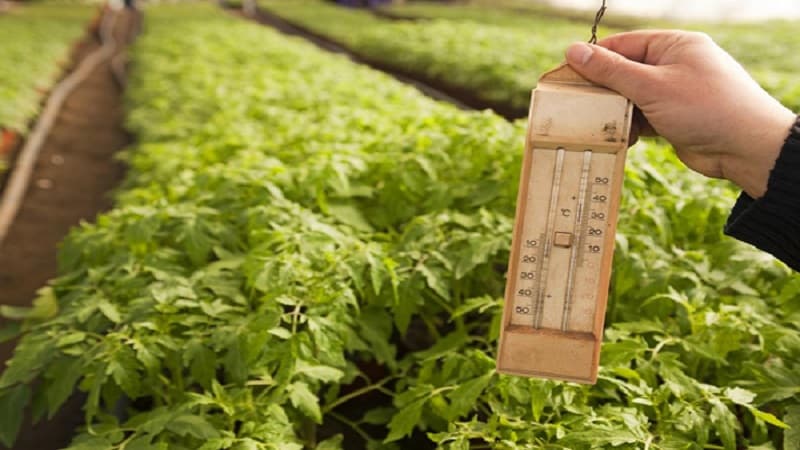
Foliar feeding also helps in the rehabilitation of tomatoes. The greenhouse uses mineral fertilizers containing a full range of microelements. The treatment is carried out twice with a break of two weeks.
Some vegetable growers use film material in the greenhouse. However, it transmits sunlight well and allows heating. What to do if the tomatoes start to burn under the film? The first step is to replace the covering material with white non-woven material, for example, spunbond. Then the seedlings are watered abundantly and left open overnight.
Damaged leaves are removed from the bush. If the root has been damaged by the heat, you don’t have to pull it out; the plant will later produce shoots. However, gardeners often prefer not to spend extra time nurturing such seedlings, but replace them with healthy bushes.
Overheating is especially dangerous for plants planted at an angle. In such bushes, the root is closer to the surface, so it also suffers from the heat. If there is a threat of overheating, the soil around the stem is covered with a thick layer of mulch.
Saving tomatoes from overheating
There are several techniques that can save tomatoes and quickly reduce the air temperature in the greenhouse: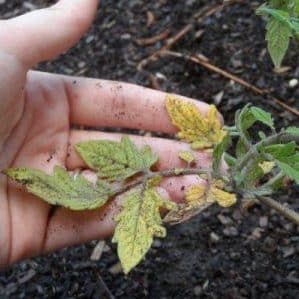
- Shading. On especially hot days, the greenhouse is shaded with a special mesh, newspapers, spunbond or white material. You can also apply solutions to the outer surface of the room: 200 g of chalk per 10 liters of water or 2 kg of flour per 0.5 liter of milk. The shading should be temporary and removed as soon as the heat stops.
- Watering with ventilation. Burnt bushes especially need water. Watering is carried out early in the morning or in the evening. During the day, water quickly evaporates, forming condensation on the walls of the greenhouse, so after watering the room is ventilated for at least an hour. Irrigating the outer walls of a polycarbonate greenhouse with cold water reduces the temperature inside by several degrees.
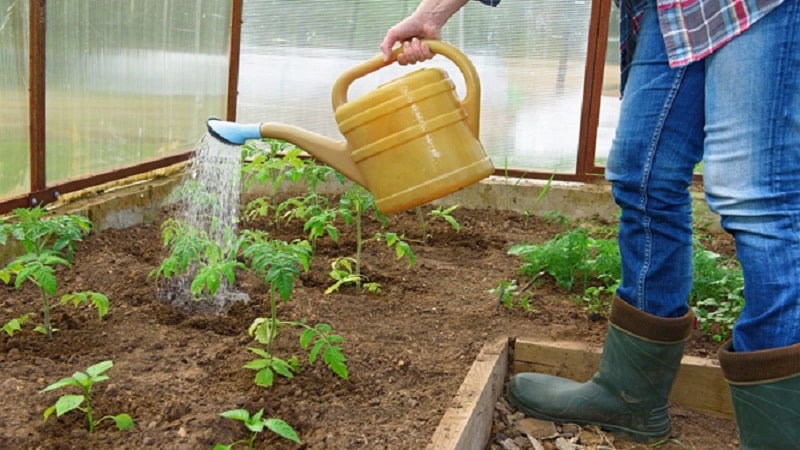
- Automatic regulator. The thermostat makes life easier for the gardener - when the air temperature rises, the window opening system is activated. The disadvantage of such equipment is its high cost.
To quickly correct the situation, buckets with an infusion of mullein and green fertilizer are placed in the greenhouse. During fermentation, carbon dioxide is released, which serves as food for damaged plants.
Important! The listed methods are suitable for greenhouses. In open ground, other methods of saving plants are used.
Creating favorable conditions in the greenhouse
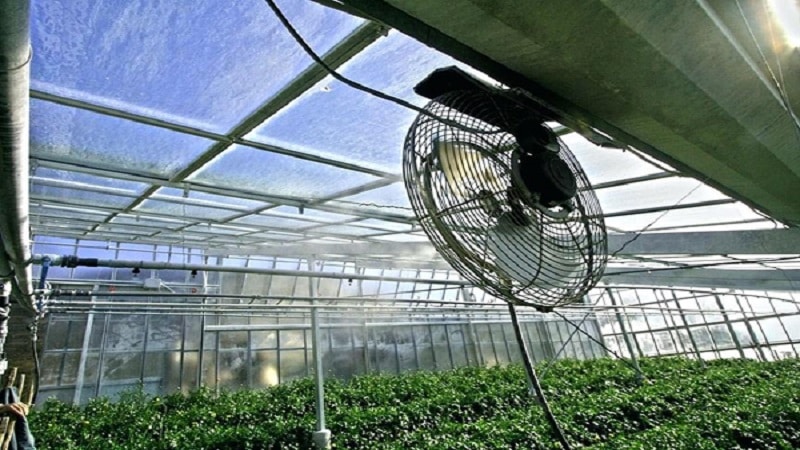
The best protection for tomatoes from overheating is to ensure favorable conditions in the greenhouse:
- Crops grown in greenhouses height 180-200 cm, suffer less from overheating. In the southern regions it is better to build premises with such parameters.
- For the development and fruiting of tomatoes, the temperature during the day should not exceed +20...+25°C, and at night - +16...+18°C. It is important to monitor not only air temperature, but also humidity. In greenhouses it should be at least 60-70%.
- If high humidity can be easily eliminated by ventilation and stopping watering, then the problem of dry air requires more effort. Besides abundant watering You can moisten paths and rows. The work is carried out in the morning so that the moisture evaporates during the day.
- For better ventilation, fans are installed in the room. The equipment is placed at floor level.
- If the greenhouse is located so that the sun hits only one side, a light protection screen is installed there. Tall ornamental plants can be used as natural protection.
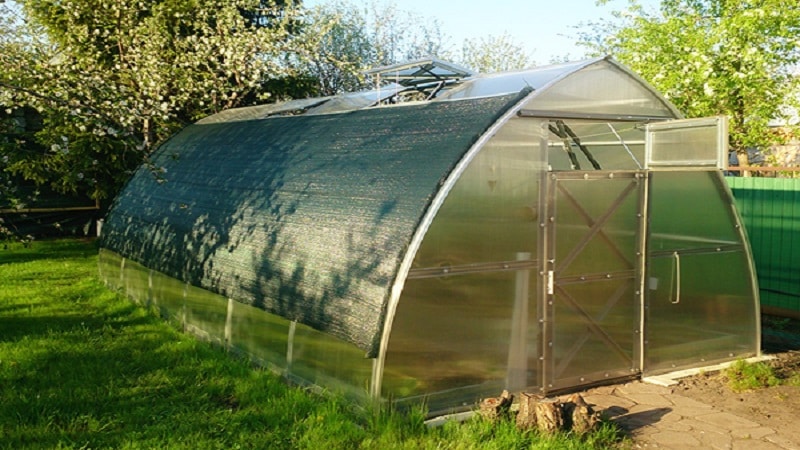
Experienced vegetable growers use homemade hydraulic temperature regulators. The system is created from two cans, different in volume, with metal lids. They are connected to each other by tubes. A large jar is filled with water and placed next to the window, a small jar is hung on the top of the window frame. A block is nailed to the bottom of the frame - it will act as a counterweight.
As the temperature rises, water from a large jar under pressure moves into a smaller one through the tubes and opens the window. When the temperature drops, the liquid moves back and the window closes.
Conclusion
Growing tomatoes in hot weather requires special efforts. It only takes a few hours for the bushes to become lethargic.Proven agrotechnical techniques will help save seedlings from overheating: mulching the beds, timely watering, loosening the soil, maintaining favorable conditions in the greenhouse.
You should not leave tomatoes unattended in the heat, even for one day. Without ventilation and shading, the gardener risks losing the entire harvest.